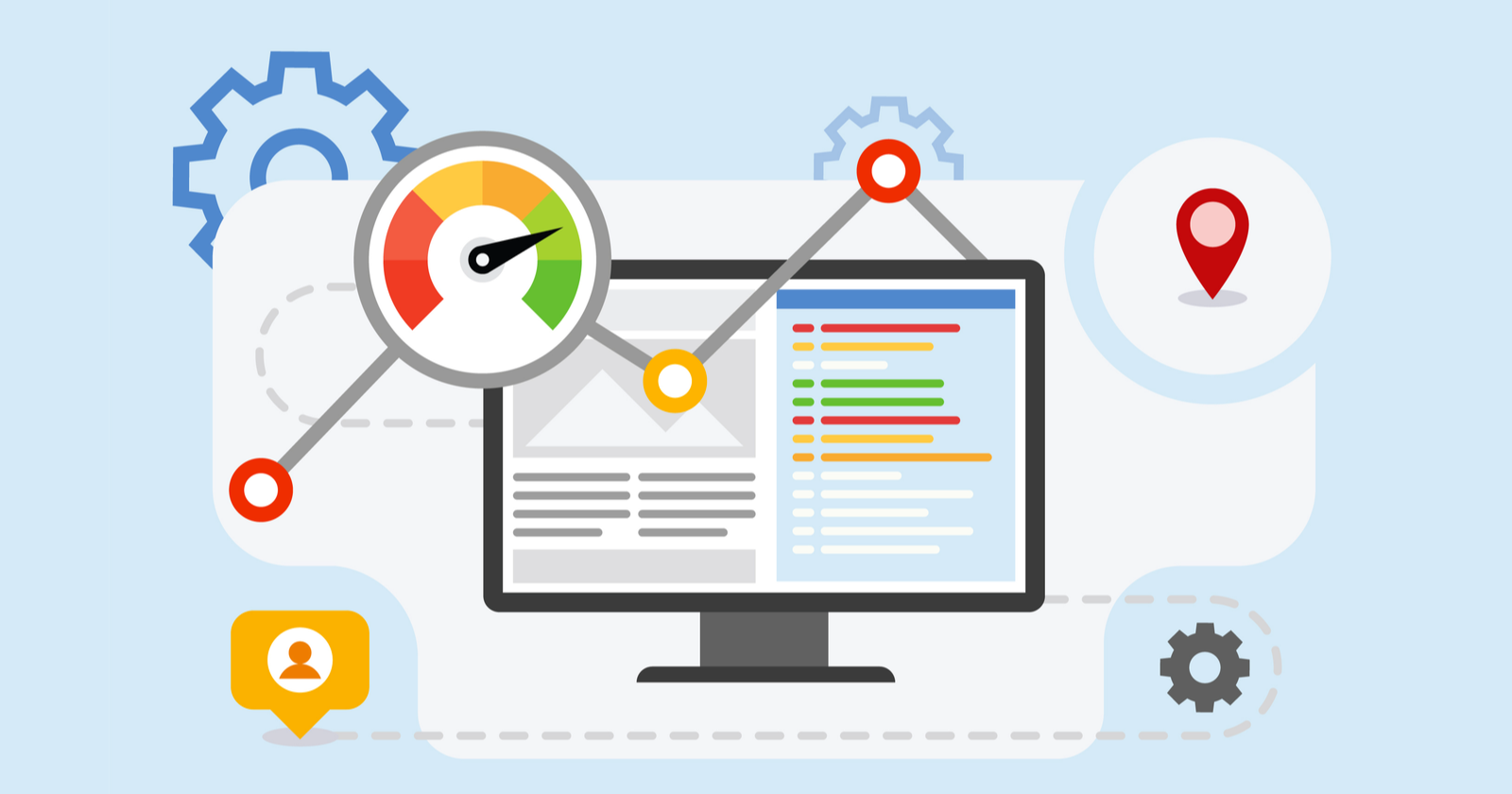If you’ve got your finger on the pulse of Google and its algorithm changes, you’ve likely seen plenty of news about the Page Experience update over this past year.
The good news? The update is finally here!
If you still haven’t gotten around to optimizing for Page Experience metrics and your competitors have, you might just find that they’re enjoying a rankings boost you’re missing out on.
In this column, you’ll learn about three key areas of priority that will help you prepare for Google’s Page Experience update, as well as several other issues to have on your to-do list.
1. Work on Your Loading Speed
The first of Google’s CWVs is largest contentful paint (LCP), which refers to the largest and most important piece of content on a webpage.
This metric will determine how quickly your page renders its most important content, so users can see it.
There are a number of ways to optimize for LCP. One thing you can do is to optimize your server, since sluggish response times can sometimes be linked to slow servers.
Speeding up a server may involve running some performance guidance so the server turns up a static page when requested rather than building the page every time someone clicks on it.
Other webpage components that can slow down LCP loading include images, videos, and block-level elements with text features.
If these items on your pages are above the fold, the slower they load, the slower your LCP.
To fix these things, you’ll need to compress your images and text files, cache certain assets, and preload some of your elements.
2. Work on Your Interactivity
The second CWV cis first input delay (FID). That is the time it takes for users to be able to interact with an element they’ve clicked, such as a link or button.
In Google’s eyes, your FID should aim to be shorter than 100 milliseconds. But let’s talk about what that means.
Readers are no doubt familiar with webpages that keep them waiting forever after they’ve clicked on an element to go to a new page, edit a shopping cart, and the like.
Well, that’s not good for users. But why is it even happening?
It’s primarily because the browser is too busy with other tasks, such as analyzing and carrying out a hefty JavaScript file.
Now, we want to focus primarily on users’ first interactions with a webpage, meaning how long it takes to load.
Just as with meeting someone new, first impressions matter. If users know from the get-go that your site is slower than a snail, they’ll probably leave and not come back.
But a strong first impression – as in, a page that loads quickly – will go a long way toward increasing user engagements with that page overall.
That’s why FID is such an important metric.
How do you fix it? It will depend on your specific website.
Use tools such as PageSpeed Insights to see how you’re doing and where you can improve.
This is some serious web-dev stuff. You’ll want to look into dividing up long tasks, minifying JavaScript, and prioritizing script loading so the most important elements are available to users first.
3. Work on Your Layout Shift
Finally, we have the third CWV, cumulative layout shift (CLS). It’s a measure of how much your webpage’s content layout moves around while the page is loading.
You’ve probably experienced this problem, too.
You’re waiting for a page to load fully and go to click on something only to find that another element loaded on the page and so pushed your desired element in another direction.
As a result, you clicked on something you didn’t want, like an ad or even a “Submit Order” button.
That makes for a bad user experience, and it’s why CLS matters enough to be considered a main element of page experience.
How can you fix this in order to take advantage of the rankings boost CWVs can provide?
You need a CLS score of 0.1 to “pass” Google’s test. That’s the maximum Google wants to see.
Any higher, and your webpages are likely shifting quite a bit. Google considers a score of 0.25 to be poor.
If you’re using a WordPress site, then you’ll probably notice that the following elements are causing your CLS:
- Dimensionless images and videos.
- Dimensionless ads and other embedded objects.
- Animations and other dynamic content.
- Flashes of unstyled text.
Fixing CLS applies mostly to mobile, since Google prioritizes mobile-first, but also because mobile devices have weaker processors and smaller viewports.
What will you have to do to eliminate that layout? It depends on what’s causing it, but if we take two examples from above:
- Browsers won’t know how to space images and videos without dimensions, meaning the areas where they will eventually be will likely change as a page loads. You can lock this down by adding specific dimensions to your images and videos.
- Then, when it comes to flashes of unstyled text, you will have to preload your fonts. That tells browsers to load your fonts as a priority element — in the first meaningful paint. In that case, you won’t have any jarring font changes that will cause cumulative layout shifts.
4. Other Page Experience Elements to Keep in Mind
Of course, Core Web Vitals aren’t the only things you need to study up on to optimize your site for the Page Experience update.
Take mobile usability.
Google will now judge every site by its mobile-friendliness, especially regarding problems such as small text sizes and the use of Flash media, which today’s mobile devices tend not to support.
There’s also the matter of the Page Experience report in Google Search Console.
This is a breakdown of how your site is performing for the page experience update, but what about all those site owners saying they aren’t seeing any data?
Google has confirmed that an empty report simply means there isn’t enough conclusive data to say one way or the other how your site is performing.
Even if you have decent traffic, the answer is probably that you just need more traffic — and for that traffic to generate relevant data — if you want the report to populate.
Google wants to see a good user experience not only in organic content but with advertising, as well. Check and ensure that the ads on your site are not interruptive or distracting.
And don’t forget, your site needs to be secure if you want to do well by the Page Experience update.
Insecure HTTP just doesn’t cut it anymore. Users need to know their data is secure with you on your site — and Google needs to know it, too.
The Page Experience Update Is Here, So Get Moving
There’s a lot to manage when it comes to your Core Web Vitals and page experience but at the end of the day, it’s all about providing the best user experience possible.
If you haven’t carved out time by now to check over and optimize these elements, you’ll want to do so as soon as possible.
But don’t panic. You won’t be algorithmically penalized for not getting in line with all CWVs and Page Experience elements.
This update is a sort of tiebreaker, according to Google. If all other things are considered equal, offering a better experience as determined by the above metrics could give you the edge.
And if you’re seeing rankings drop, it’s not because you’re being punished. It could be that your direct competitors are prioritizing these optimizations and you’re not.
That’s an incentive to get moving!
More Resources:





